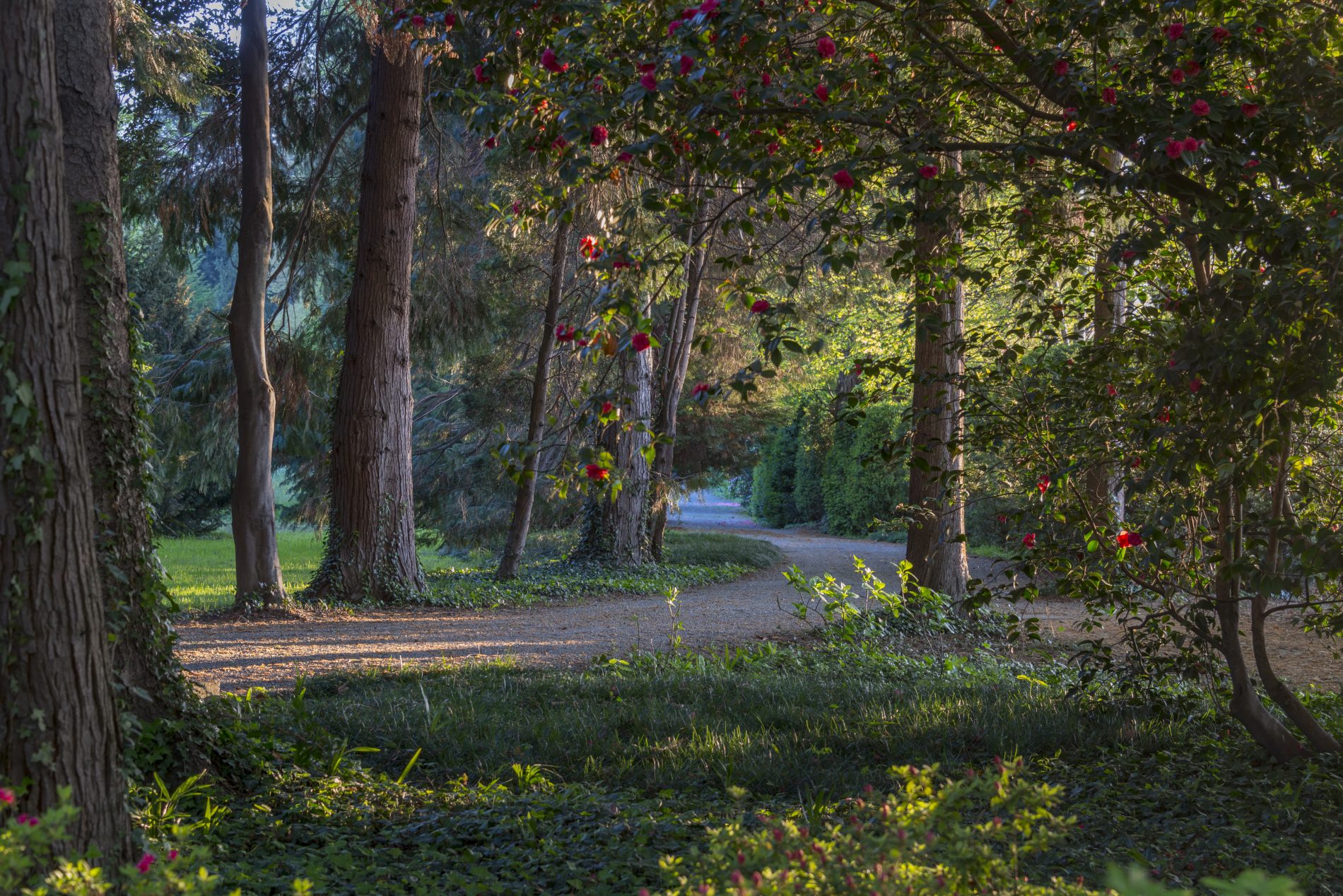The Tulip Tree
The Tulip tree, or Liriodendron, commonly known as the "tulip tree," is the tallest tree in the park, reaching approximately forty meters. It is one of the most iconic trees of 19th-century gardens and English-style parks. It belongs to the Magnoliaceae family and is native to the eastern coast of the United States. Its name derives from its highly fragrant flowers, which resemble tulips and turn a beautiful shade between yellow and orange in May.
The bark is marked by deep grooves that run regularly from the base to the top, and the tree's attachment to the ground is distinguished by its powerful roots. The tulip tree thrives in nutrient-rich soil, such as that found in meadows.
Its large leaves tremble in the wind, much like those of a poplar. In autumn, as temperatures suddenly drop and long rains begin, the tulip tree, like the sweetgum and maple, provides a final burst of colour. The tulip tree was one of the first American species to be introduced to Europe in the 18th century. During the English colonization of North America, gardeners and wealthy landowners in the Old World were eager to learn about and purchase exotic plants from the New World, leading to thriving trade between the colonies and England.
The pioneer botanist John Bartram, for instance, frequently led expeditions to search for plants and seeds in the areas around Philadelphia, which he would ship on vessels bound for England. His business partner, Peter Collinson, a passionate botanist, would distribute them to friends and nobles of the time. The tulip tree was admired for its grandeur and, most notably, for the spectacular display of colour it offers in the fall.

The Tulip tree, or Liriodendron, commonly known as the “tulip tree,” is the tallest tree in the park, reaching approximately forty meters. It is one of the most iconic trees of 19th-century gardens and English-style parks. It belongs to the Magnoliaceae family and is native to the eastern coast of the United States. Its name derives from its highly fragrant flowers, which resemble tulips and turn a beautiful shade between yellow and orange in May.
The bark is marked by deep grooves that run regularly from the base to the top, and the tree’s attachment to the ground is distinguished by its powerful roots. The tulip tree thrives in nutrient-rich soil, such as that found in meadows.
Its large leaves tremble in the wind, much like those of a poplar. In autumn, as temperatures suddenly drop and long rains begin, the tulip tree, like the sweetgum and maple, provides a final burst of colour. The tulip tree was one of the first American species to be introduced to Europe in the 18th century. During the English colonization of North America, gardeners and wealthy landowners in the Old World were eager to learn about and purchase exotic plants from the New World, leading to thriving trade between the colonies and England.
The pioneer botanist John Bartram, for instance, frequently led expeditions to search for plants and seeds in the areas around Philadelphia, which he would ship on vessels bound for England. His business partner, Peter Collinson, a passionate botanist, would distribute them to friends and nobles of the time. The tulip tree was admired for its grandeur and, most notably, for the spectacular display of colour it offers in the fall.
Audio
I punti di interesse
Ti trovi qui
